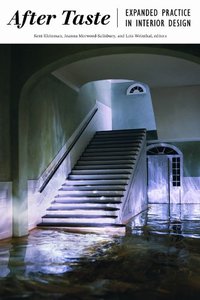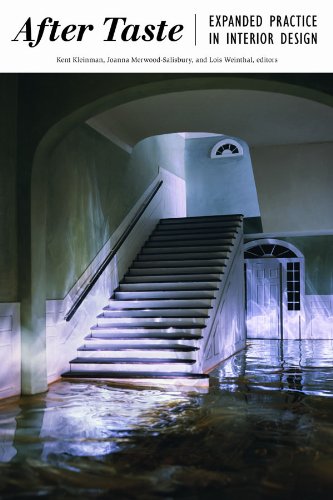After Taste: Expanded Practice in Interior Design by Kent Kleinman, Joanna Merwood-Salisbury and Lois Weinthal
English | 2011 | ISBN: 1616890266 | ISBN-13: 9781616890261 | 256 pages | PDF | 7,4 MB
English | 2011 | ISBN: 1616890266 | ISBN-13: 9781616890261 | 256 pages | PDF | 7,4 MB
AfterTaste: Expanded Practices in Interior Design is an edited volume comprising texts, interviews and portfolios that collectively document new theories and emerging critical practices in the field of interior design. The material is informed by, but not limited to, the annual AfterTaste symposia hosted by Parsons The New School of Design.
The book s central argument is that the field of interior design is inadequately served by its historical reliance on taste-making and taste-makers, and, more recently from a set of theoretical concerns derived from architecture; the volume seeks to set an expanded frame by advancing new voices and perspectives in both the theory and practice of interior design, considered as an independent discipline. In 2007, the Department of Architecture, Interior Design and Lighting at Parsons The New School for Design inaugurated an annual international symposium series dedicated to the critical study of the interior. Titled AfterTaste, these yearly symposia offer expansive views of interior studies, highlight emerging areas of research, identify allied practices, make public its under-explored territory, and attract future designers and scholars to the field. Now in its fourth year, AfterTaste has proven to be one of the very few venues internationally for critically exploring interior design. The field of interior design is asymmetrically served by the current literature in the field. Too frequently, the current writing and making in interiors emphasize the ineffable, the biographical, and the social elite, and promote a curiously unsubstantiated notion of connoisseurship as the principal basis for design. Other attempts to construct an intellectual agenda for the study of the interior draw heavily from architectural theory, ignoring the discipline s own specific and autonomous history. AfterTaste, the book, is intended to adjust this imbalance by introducing interior design material that is theoretically and historically situated, technically grounded, demographically inclusive, and aesthetically adventurous.



